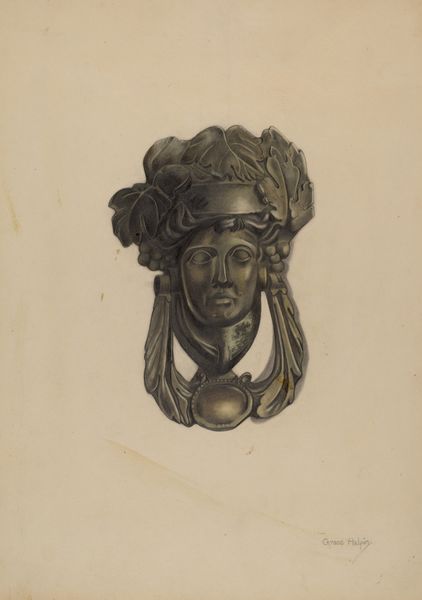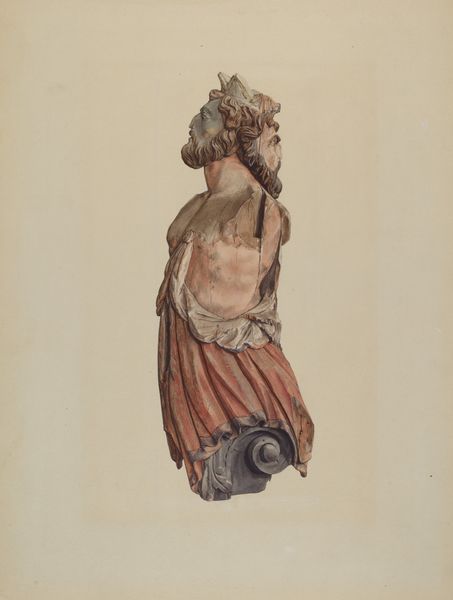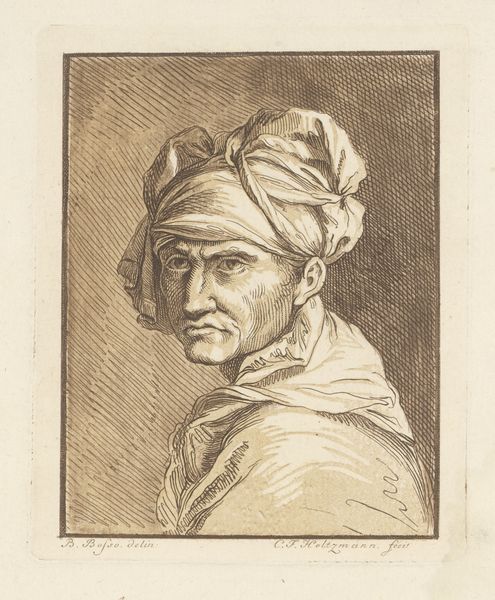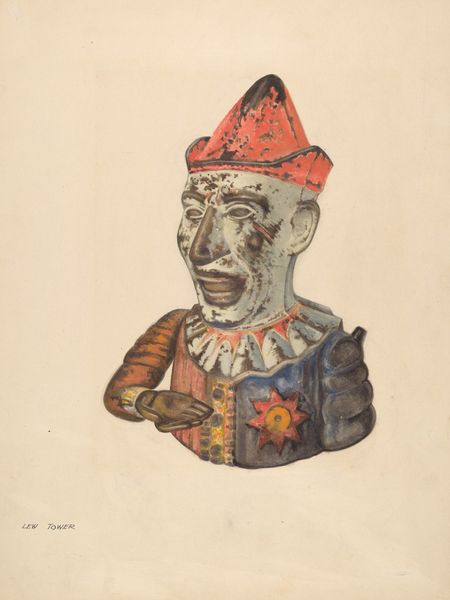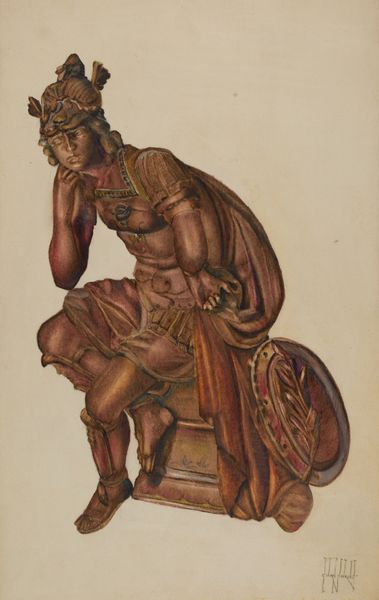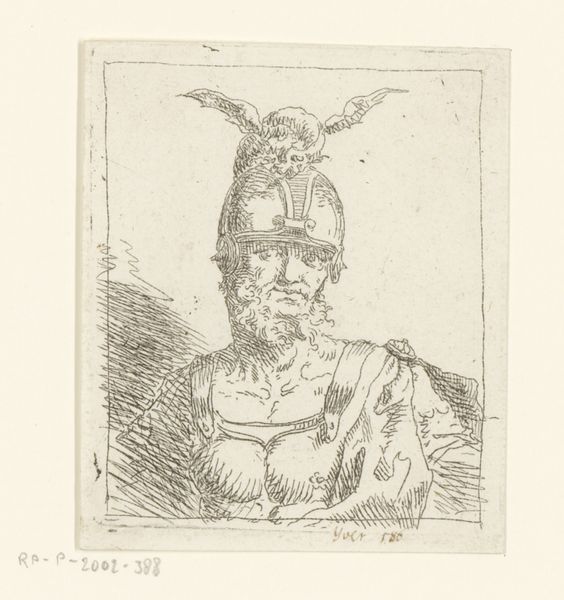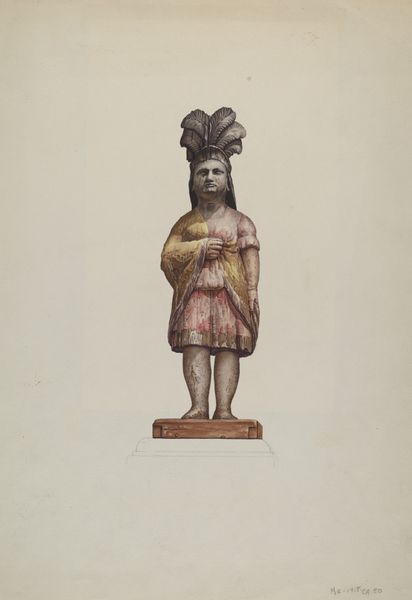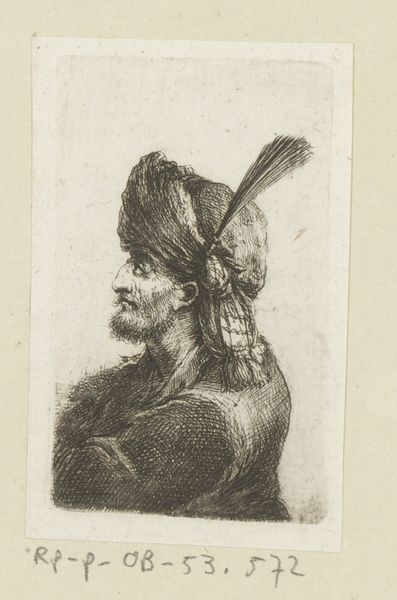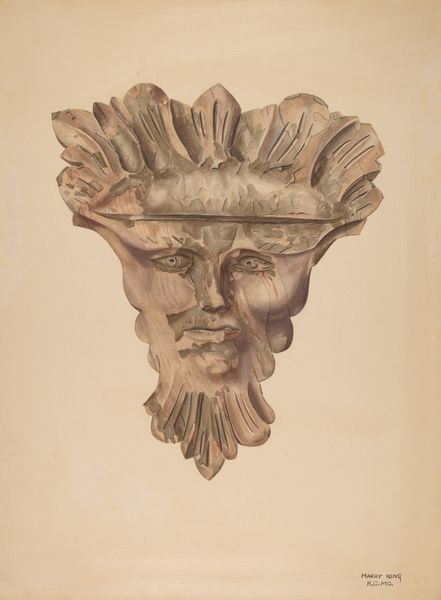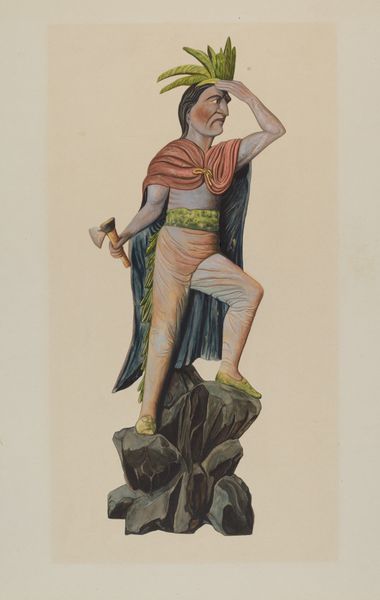
drawing
#
drawing
#
charcoal drawing
#
figuration
#
portrait reference
#
portrait drawing
#
watercolor
Dimensions: overall: 35 x 24.3 cm (13 3/4 x 9 9/16 in.)
Copyright: National Gallery of Art: CC0 1.0
Editor: So this is Louis Plogsted's "Figurehead 'S.S. Robert Fulton'", dating from between 1935 and 1942, rendered in watercolor and charcoal. It's a fairly straightforward depiction of a carved figurehead. The material rendering gives an amazing amount of depth to the work, but the flatness of the rendering and line work is in definite tension with the three-dimensionality of the subject. What catches your eye in this drawing? Curator: Immediately, I am drawn to the interplay of line and color to produce this tension that you mention. The drawing shows a striking formalism—the use of charcoal and watercolor to describe the textures of the carved wood is very effective in communicating the properties of the underlying sculpture. The meticulous, almost clinical depiction of the form asks us to consider the structure, and the original construction of this form. Does that strike you as well? Editor: Absolutely, but does the work's title influence how we see the composition? Curator: The title certainly frames our understanding. Knowing it's a figurehead encourages us to consider its original context, as ornamentation for a ship. The artist also employs this wonderful restricted palette, almost monochromatic, that heightens the impact of light and shadow in modelling the figure's form. Do you see how the subtle variations in tone define the planes and volumes of the sculpture, and in what way do they speak to the meaning or effectiveness of the composition? Editor: It seems like the emphasis here is less on individual expression and more on capturing the object's essence through formal qualities. The way the artist isolates the subject emphasizes shape and line, and makes me think less about context and more about the physical construction. Thanks for breaking this down! Curator: My pleasure. By considering the formal aspects, we begin to unlock potential interpretations that move beyond a mere representational reading, or reference to social setting. We gain insight into the visual structure, the artist’s hand, and the semiotic possibilities within the image itself.
Comments
No comments
Be the first to comment and join the conversation on the ultimate creative platform.
